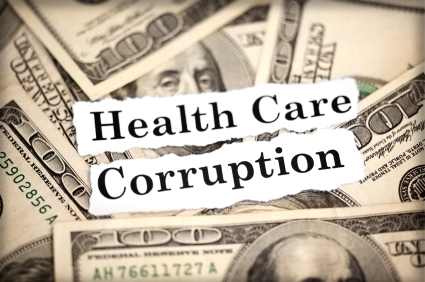A central theme is emerging in the insurance fraud space: individuals will continue to commit opportunistic acts of insurance fraud but the risk from organized fraud activity is quickly becoming a massive problem.
On the heels of recently published Insurance Research Council reports on the No-Fault/PIP fraud problems in New York and Florida, the National Insurance Crime Bureau (NICB) recently released a report detailing 2010 questionable claim referrals and indicating that suspicious claims are up 24 percent over 2008 levels. But this statistic only reveals part of the story. Digging into the details of the NICB report, some interesting patterns emerge and suggest that the landscape of insurance fraud is shifting.
Organized Fraud Is Up And Medical Providers Are Leading The Way
The data suggests that organized fraud activity is rapidly increasing and that insurers are taking action. Unsurprisingly, medical providers are a growing part of the equation, helping drive up claim values:
- In the National Insurance Crime Bureau's report, which compares 2010 questionable claim referrals to 2009 and 2008, most of the referral reasons reflected on casualty claims have to do with staged accidents or medical provider fraud: excessive treatment, inflated billing and solicitation for example. Every casualty claim referral reason saw an increase in volume this year except for a small 1 percent decrease in slip-and-fall claims: arguably the one reason that is not directly related to staged accidents.
- On vehicle claims, suspicious towing and storage charges were up 116 percent. This is a common component of some organized fraud rings where inflated tow charges are buried in the repair bill and hard to spot.
- Five out of the top six fastest growing miscellaneous referral reasons are connected to staged accident activity: vendor fraud, attorney activities, organized group/ring activity, medical provider, and medical provider/attorney relationship (leaving only Malingering as the sole opportunistic fraud in this bunch).
- Even among workers' compensation claims, inflated medical billing leads the category with a 38 percent jump this year, suggesting that the focus may be shifting from claimant frauds — which still have the highest volume — to medical provider frauds.
- While medical provider-based frauds lead the way, organized fraud can take other forms as well. For example, auto glass fraud is up a whopping 450 percent.
Economy-Driven Opportunistic Fraud May Not Be As Bad As We Thought
Given the tough economic conditions in the United States, many investigators opined that more individuals would be driven to this type of insurance fraud but the statistics suggest otherwise:
- Somewhat surprisingly, arson referrals continue a decline. Despite the noise in the press about desperate home owners torching their properties for insurance money, arson/fire claims have decreased over the past two years. And in the commercial market, arson/fire claims are down 11 percent this year.
- After a jump last year, commercial slip-and-fall claims are down this year.
- Vehicle owner give-ups (where an owner fakes an auto theft to dispose of the vehicle and get the insurance proceeds) are also down this year.
Anti-fraud groups like the National Insurance Crime Bureau are focusing more of their resources on medical provider fraud and staged accidents. Special Investigation Units within insurance companies need to do the same. But the industry faces some hurdles in addressing this evolving threat.





